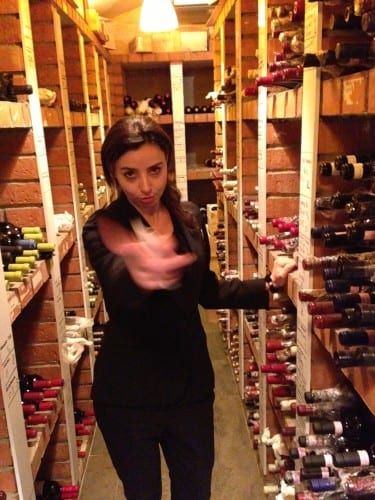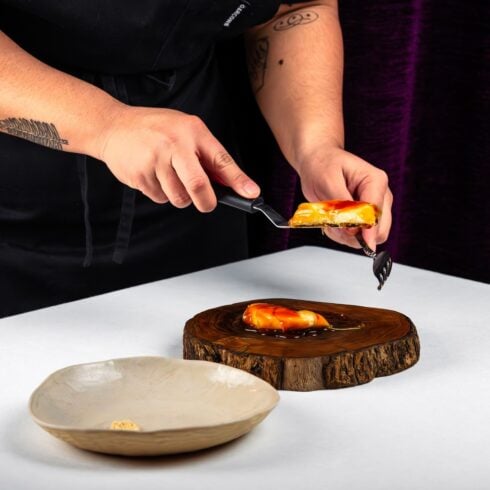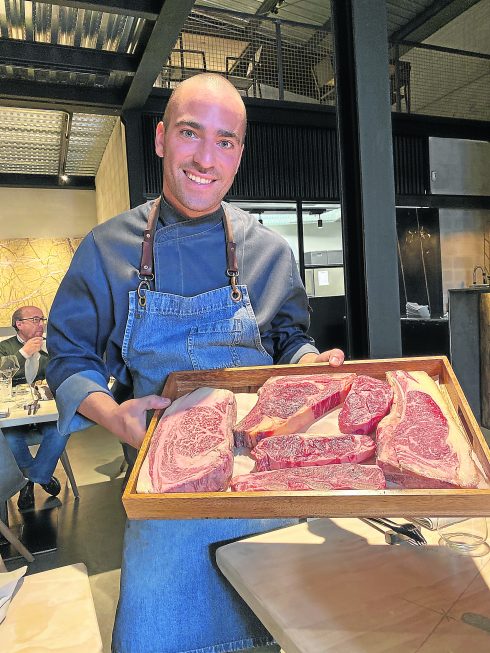SHE is in charge of one of the most prestigious wine cellars in Spain. And with over 900 references, Maria Jose Huertas has to keep her wits about her when serving her customers at restaurant La Terraza del Casino, in the heart of Madrid.
The pin up girl of Spanish wine, she has to keep a pace with the modern, creative cuisine of chef Paco Roncero, who trained with Ferran Adria, at El Bulli.
Luckily, Huertas, from Zamora, has also done her time with Catalunya’s uber chef and knows a bit about food pairing.
As well as tasting some 30 wines a week, she makes a point of trying Casino’s wines – which include over 20 white Burgundies, 70 Rieslings and most of Bordeaux’s first growths – as often as she can.
There are 12 different vintages of Vega Sicilia she has to know like the back of her hand, as well as bottles such as a 2007 Bienvenues Batard Montrachet, which will set you back 407 euros.
But, above all, she is the sort of person more likely to recommend a vineyard’s second, cheaper wine than the higher more expensive one. “Take Pingus, can it really be worth the 700 euros or so when you can get its second wine Flor de Pingus for so much less? It is pretty much the same as L’Ermita and Finca Dofi, its second wine, which I have tried many times and often prefer,” she insists.
Her favourite Spanish wines though come from Jerez and she tries to use at least two or three sherries for any menu degustation. “The quality of the wines are incredible and I’ll always find space for an Oloroso and a Pedro Ximenez,” she says.
She got into the world of wine when she found a part-time job at Casino while studying agriculture at university in Madrid 13 years ago.
“I started as receptionist and just moved up the ladder,” explains the mother of one, whose husband Daniel Gonzalez works for an American wine importer. “I had soon begun to go into the cellar and took an interest in the wines.
“I think I had a good nose, as a lot of women do. We get used to the smells of perfume and smells in the kitchen so I think it comes quite naturally.”
In terms of changes in wine in Spain over the last decade, the main one has been quality. “But it is not just the quality… the marketing, the sommeliers, the writers, everything has changed,” she says.
“On top of that diners are starting to want to try new ones. It used to be just Rioja but now they are starting to demand new flavours, new tastes, things from Lebanon, even Romania.
“It is all helping to make Madrid a more open and creative place.”
“I THINK what I am doing may well be in fashion in 20 years time,” explains Rodrigo de la Calle, a Spanish chef with a rare sustainable vision.
Favouring vegetables over any type of fish and meat, he has spent the last decade trying to understand how to best present them to diners.
His menu says it all with phrases splashed all over it like ‘Respect of the sea’ and ‘Ecology and Nature’ rolled into a globe on the cover, and he has not cooked – or eaten – endangered fish such as tuna for five years.
“I also don’t use any game as I don’t like hunting and I cannot support any mistreatment of animals,” he adds.
Recently switching his Michelin-star restaurant from the backwaters of rural Aranjuez to the high profile five star hotel Villa Magna, he is suddenly very much in the limelight.
But luckily his food, dubbed ‘gastro botanical’, is not only adventurous in the extreme… it looks extremely beautiful.
“I put a lot of emphasis on the look of my dishes, as it is the best way to seduce the diners,” says the 37-year-old. “I also change my menu at least ten times a year as I get bored otherwise.”
The food is certainly different from anything else I have ever tried. I went for his so-called ‘Green Revolution’ tasting menu, some 14 courses, not one with meat and only two fish, one involving an oyster and another with caviar.
It started with a stunning purple broccoli soup with pomegranates and mixed with a veritable ‘veggie bomb’ of rolled up radishes, rocket, onion and edible flowers with lime. It was delicious in the extreme, as was the stuffed salsify in a hazelnut stew with a vegetable called ‘deer’s horn’, which Rodrigo claims to have ‘discovered’.
Over the course of the next two hours we were bombarded with flavour after flavour and including lichens, mushrooms, algae and even new potatoes with delicious white truffle.
A pudding of fennel soup with melon and basil ice cream was incredibly original and the selection of wines chosen by the sommelier to go with the meal was perfect and eye-opening.
His interest in vegetables came with Madrid-born Rodrigo spending most of his upbringing being shunted around rural regions, including Jaen, Toledo and Aranjuez, as his father worked as a farmer. “Every three months we moved again, but it helped me to understand agriculture and the land and my parents always used to take me to good restaurants to eat,” he explains.
Against his parents’ wishes he joined a cookery school at the age 16 and after graduating, spent three years working in San Sebastian at places like Martin Berasategui and Mugaritz.
Most of his products come from mainland Spain with the exception of truffles from Italy, oysters from France and Salsify from Belgium.
“These days with the crisis so many people have gone back to the land and are growing great organic vegetables, snails, rabbits, chickens, even eels.
“You don’t need to go much further as Spain has the richest mix of vegetables in the world.”
Click here to read more News from The Olive Press.








